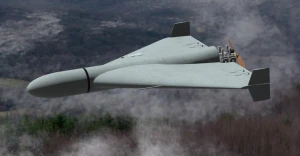
Ukraine's defense strategy and security agreements: Prospects after US NATO Summit. Serhii Zgurets’ column
The 75th NATO anniversary summit is currently underway in the USA, lasting until July 11. The proposals for Ukraine are less ambitious than hoped for by Kyiv and some NATO members
NATO Summit in the USA
Ukraine awaits the final communique, likely emphasizing Ukraine's irreversible path to NATO membership and the need for active anti-corruption efforts. Both Ukraine and its partners are focusing on immediate defense against Russian attacks in the near future. At the summit's start, leaders of five countries committed to providing Ukraine with additional air defense systems.
Five new strategic systems have been announced to handle anti-missile and anti-aircraft defense tasks, primarily Patriot systems. The United States, Germany, the Netherlands, Romania, and Italy will each transfer one system. The key news is the additional Patriot system from the USA, adding to the ones already known from other countries. Germany's announced system is already on standby in Ukraine. In total, Ukraine will receive eight Patriot systems and one SAMP-T system, with the possibility of more in the future. There is also hope for a transfer of Patriots from Israel, which are being removed from combat duty and may eventually be sent to Ukraine.
During the year, our partners promised to provide a significant number of anti-missile systems and missile weapons, from Patriot to NASAMS, highlighting the importance of bolstering our air defense.
Five additional Patriot systems will help Ukraine, but they won't be enough for full protection, said Volodymyr Zelenskyy. He also emphasized the urgent need for 128 F-16 fighter jets for the Air Force, a jump from the 90 jets previously discussed from Denmark, Belgium, the Netherlands, and Norway. The 128 jets would cost over $20 million. Given Russia's 300 aircraft used for strikes on Ukraine, this need is urgent, not long-term. After negotiations in Washington, Zelenskyy stated, "We are increasing the number of aircraft available to Ukraine."
Denmark and the Netherlands have already started transferring the first F-16 fighter jets to Ukraine, which will help defend against Russian aggression this summer, according to US Secretary of State Antony Blinken.
Exactly how many aircraft will be transferred hasn't been announced yet. This question remains open. However, the Alliance has agreed in principle to finance Ukraine with $40 billion next year. These are significant figures. It was also decided to create a new NATO structure, likely at the level of a separate command, which will handle the duties of the contact group on Ukraine’s defense, either in addition to or instead of the Ramstein format.
Why is this important? Previously, individual countries made promises, but the delivery pace often didn’t match what was announced. For example, the 14 brigades that Volodymyr Zelenskyy mentioned are equipped with personnel but are still waiting for the promised equipment. This new structure should coordinate such assistance more precisely. It was also decided to expand training assistance for Ukrainian military at various levels and discuss defense-industrial cooperation with Ukrainian enterprises. This aims to involve them more in Alliance projects and create models urgently needed on the battlefield. So, all these measures bring Ukraine and NATO closer in a practical and operational sense. But the strategic question remains: when will Ukraine actually become a NATO member?
Ukraine's invitation to NATO
Oleksiy Yizhak, an expert at the National Institute for Strategic Studies, believes that for Ukraine to get an invitation to NATO, the Summit must have an agreed protocol on accession. This means a clear, one-page document outlining how and within which borders Ukraine would join NATO.
“They're not ready to consider this yet, and there are two factors at play, as always. First, there's the war, a security factor created by Russia, that’s a conflict point for them. Some argue the war should stay outside NATO. Even though some countries are willing to join the conflict, there's no consensus and no trust in Ukraine. They believe the Ukrainian political system has corruption that prevents NATO membership,” he explained.
Everything related to NATO membership is still at the level of the Bucharest Summit's promise that Ukraine will one day become a member. Now, the term "irreversibly" is being added – Ukraine will become a NATO member, though we still need to wait for this exact wording. The Secretary-General's practical five points, at least a few of which are known, are very important and serious.
"The Ukrainian command is focused on training troops and coordinating aid. There's a separate aspect for the defense-industrial complex since it involves different procedures and mechanisms, not just command structure. The key point is the $40 billion in annual aid. Unfortunately, it's not long-term, but Ukraine will receive this amount for the next year regardless of the U.S. election results. Practical cooperation includes command, mandatory assistance, defense industry participation, and additional air defense systems. I believe NATO will help close parts of Ukraine's skies, I think they are considering this issue too," Yizhak said.
Direct presence creates guarantees and practical mechanisms. If many weapons maintained by our partners are deployed, and if defense enterprises with European and American investments are here, it creates an economic and military presence. This forces our NATO partners to respond if something happens to Ukraine. When interests, money, people, and weapons are involved, it means abandonment is not an option. Security agreements alone aren't guarantees but open up possibilities. Over 10 years, they create opportunities for defense-industrial cooperation, which is crucial.
The USA didn't let us use American weapons on Russian territory for a long time. There's also a ban on the direct presence of American defense companies in Ukraine. Right now, the US is debating whether to let its defense firms set up joint ventures here. If this goes through, it would mean the security agreements and decisions from the NATO summit offer something very close to NATO guarantees, without direct commitments, but pretty close.
- News














































